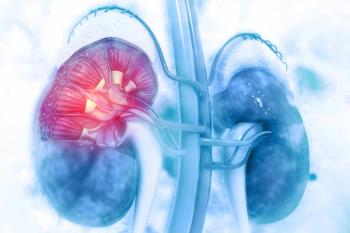
Positive Surgical Margins in RCC More Common Among African Americans
African American patients with localized renal cell carcinoma who underwent robotic partial nephrectomy were at an increased risk for positive surgical margins compared with white patients.
African American patients with localized renal cell carcinoma (RCC) who underwent robotic partial nephrectomy (RPN) were at an increased risk for positive surgical margins compared with white patients, according to the results of a population-based study
According to the study, RPN has become the preferred surgical approach for patients with T1 RCC because of better surgical outcomes and lower perioperative morbidity compared with open or laparoscopic procedures. However, RPN is associated with greater rates of positive surgical margins.
“It is well recognized that racial disparities exist in the incidence, access to care, prognosis, and survival outcomes of patients with RCC,” wrote Victor S. Chen, BS, of Case Western Reserve University School of Medicine in Cleveland, Ohio, and colleagues. “However, little is known of whether the quality of care for RPN varies by race. Therefore, we sought to assess the association between race and margin status among patients undergoing RPN for T1 RCC in a large population-based cohort study.”
The researchers used data from the National Cancer Database to identify patients with localized RCC who underwent RPN from 2010 to 2013. They identified 12,515 patients, of which 8.3% had positive surgical margins.
The rate of positive surgical margins was higher at nonacademic hospitals compared with academic hospitals (10.4% vs 6.8%; P < .001). According to the researchers this finding “supports the volume-outcome relationship where higher volume surgeons may have greater clinical experience to perform RPN in anatomically complex renal tumors and thus have lower rates of positive surgical margins following RPN.”
Significantly more African American patients had positive surgical margins compared with white patients (10.8% vs 7.9%; P = .005). A multivariable analysis showed that African American patients were 40% more likely than white patients to have positive surgical margins (odds ratio, 1.40; P = .008).
“Although the clinical relevance of positive surgical margins after PN for RCC has been questioned, a recent retrospective cohort study demonstrated that positive surgical margins were associated with greater risk of distant relapse,” the researchers wrote. “In addition, the surgical margin status is widely regarded as a well-known quality indicator.”
From 2010 to 2013, the proportion of African American patients with positive surgical margins did decline from 12.5% to 8.3%. African Americans also had a greater proportion of larger tumor size compared with other races (18.8% vs 15.7%; P = .021).
“These results suggest potential differences in quality of care, and diffusion of advanced treatment technology varies by race,” the researchers wrote. “Further study is needed to delineate potential actionable causes for the disparities observed in this study and design interventions to improve quality of care for minority men.”
Newsletter
Stay up to date on recent advances in the multidisciplinary approach to cancer.





